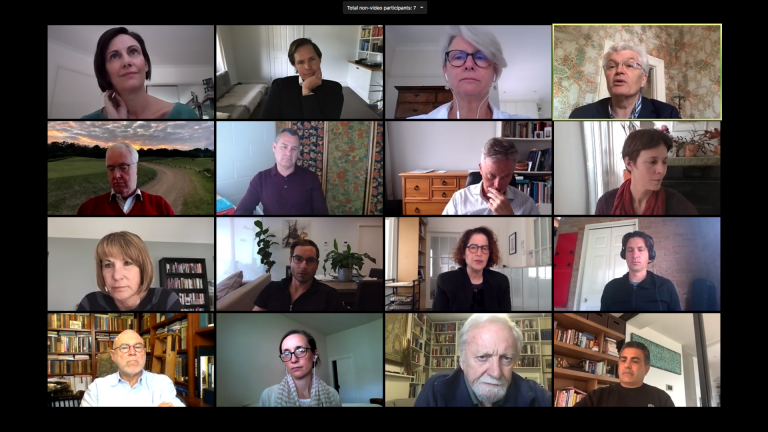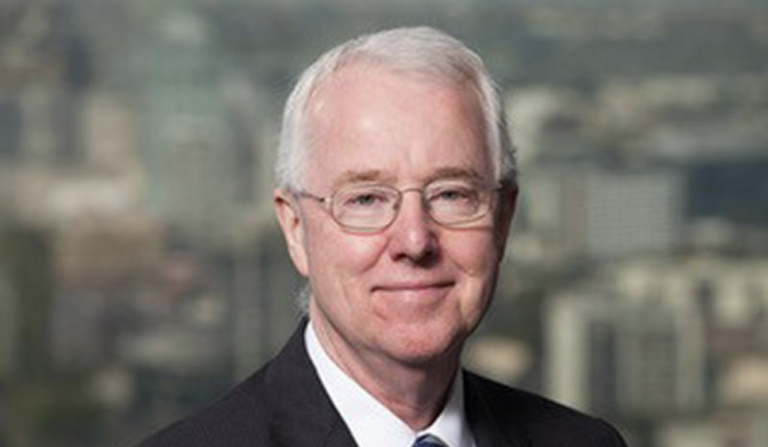The Australian people, now armed with sophisticated means of expressing their dissent and proffering their alternatives, have resoundingly repudiated John Howard’s policies and politics. In reality, this was not the ‘Me Too’ election – it was decided by the ‘We Too’ voters, voting for the bigger picture not the bigger promises.
This election saw the entrance of the online progressive group GetUp, part of a global movement democratising the political process through new technologies. GetUp’s campaigns have brought many Australians back into the political fold from which John Howard had largely excluded them. Its exponential growth in members and influence is as indicative of the failure of the party-political system to appeal to those concerned but not active, and also of the success of online communication in engaging those otherwise too busy, intimidated or disillusioned to seek change through conventional channels.
The effect of a rapidly burgeoning civil society in this election, of which GetUp is just one
example, was that the debate could move out of the narrow frames of reference laid down by the political parties. Agendas could be pursued in their own right, without having to fit within the simplistic labels that that polarise politics and hinder progress.
In reality, people are complex beings whose beliefs and concerns do not fit neatly within
any one pigeonholed ideology. Voters are generally forced to prioritise competing concerns at the ballot box, and therefore a vote for a political party becomes an unwilling embrace of an entire package, including its unpalatable elements.
GetUp offers something else – an ‘opt-in’ campaigning vehicle. Because they don’t have to sign up to a particular ideology, members are free to select which actions they wish to take
on issues of concern to them. GetUp both facilitates those actions and provides the comfort of knowing that one acts in significant company. This is a new phenomenon in Australian politics – a non-partisan, multi-issue member-driven organisation using new technologies to facilitate meaningful and effective political action. This election has demonstrated the effectiveness of such an organisation being a vehicle for change; galvanising community attitudes and translating them into the mobilisation of a financially sustainable grassroots movement.
This election not only showed how massive swathes of the community are embracing new technologies and translating them into effective action, but also that our leaders have been the last group to embrace this sphere appropriately. Anyone who doubts this simply has to
look at some recent ‘YouTube’ pitches to see just how out of their traditional comfort zone our politicians are.
For them, this was not the first e-lection; and once again most simply translated old forms of expression into new media-static TV style announcements and press releases. For many in the community, however, it was the first e-lection. Emboldened by the empowerment of a truly democratic internet, political movements can flourish on their ideas and momentum alone. The internet can also undermine and invert traditional power structures. GetUp’s ‘Climate Clever-er’ spoof ad demonstrated this awesome potential. Here, individuals with no other agenda than their concern for the issue, all chipped in to create a powerful sum total capable of getting their message to millions of fellow Australians as only the wealthy or well-connected could previously do. It raised over $250,000 online in only 72 hours, in average donations of $50.
While unprecedented numbers of voters were using the internet to engage in politics, not all political parties seemed to be interested in engaging with them. HowShouldIVote.com.au, for example, started by GetUp as a non-partisan tool to help voters match their beliefs with the positions of their local candidates, received only a handful of Coalition candidates’ surveys – denying the 150,000 people who used the site (over 1% of the voting population) the possibility of being matched with Liberal candidates.
Despite efforts by the former Government to ensure the opposite, this election also saw
young people enrolled and engaged on an unprecedented level. Young people have traditionally been excluded from the national political conversation but have been much quicker to take up the new forms of communication. This new level of political engagement for young people is immediate, creative and transparent, with very low barriers to participation and involvement. The increased profile of the Greens in this election has two causes – the elevation of climate change to a mainstream concern; and the increased political engagement of the 18-30 demographic. Once mistaken for apathy, the
disempowerment, frustration and disconnection of youth from the political process is broken down by the accessibility, immediacy and effectiveness of online action, communication and networking. Everyone is equal online.
Another feature of this election was the end of one-party rule in the Senate. The Howard Government’s abuse of their Senate majority eventually came back to bite them in the lower house. In his last term of power, John Howard introduced unpopular legislation that was not subject to the checks and balances, or even the protracted debate, to which Australians were accustomed. It also symbolised the wider disdain for time-honoured democratic processes and practises that characterised Howard’s term. A large part of the democratic renewal seen during the election must be viewed as a reaction to direct attacks on elements of democracy itself. Several GetUp innovations, including the unprecedented multi-party political ad, also helped to couch Howard’s political excesses in terms of the fight for the Senate. A once-in-a-generation Senate majority spawned an equally rare electoral focus on the normally low-key House, as the effects of ill-conceived and unscrutinised legislation such as WorkChoices were taking actual effect in the electorate.
Over the last two years, polling commissioned by GetUp has consistently shown the
gulf between public opinion and official policy on key issues, especially among those identifying as Coalition voters. The people now have the power to take the lead on these critical issues when the politicians fail to do so. The result, and potential, of this was seen on Saturday. For the first time a massive non-partisan electoral movement was mobilised to highlight the issues for voters, when thousands of GetUp volunteers turned out in over 100 electorates to contact over half a million voters on issues of concern to them. Such simultaneous people-driven grassroots action is only capable through the harnessing of new technologies.
This ‘we too’ election, then, was not necessarily an endorsement of Kevin Rudd but an
invitation for him to act on the issues to which Australians did not see John Howard as the answer. The people want action on climate change, they want Australian soldiers out of Iraq, they want their real work choices intact, and Howard did not offer them that. Empowered, informed and engaged in an unprecedented, sophisticated and effective way,
opposition to Howard’s vision for Australia was both amplified and unified in a way that saw tangible electoral results.
The new Government should be aware that those in power now act in a crucible of increased transparency and accountability, and without absolute control of the national issues agenda. With new vehicles that allow diverse and pluralist political beings to take action, unbeholden to traditional power or party structures, the citizen’s voice in our democracy will undoubtedly be heard and heeded.



